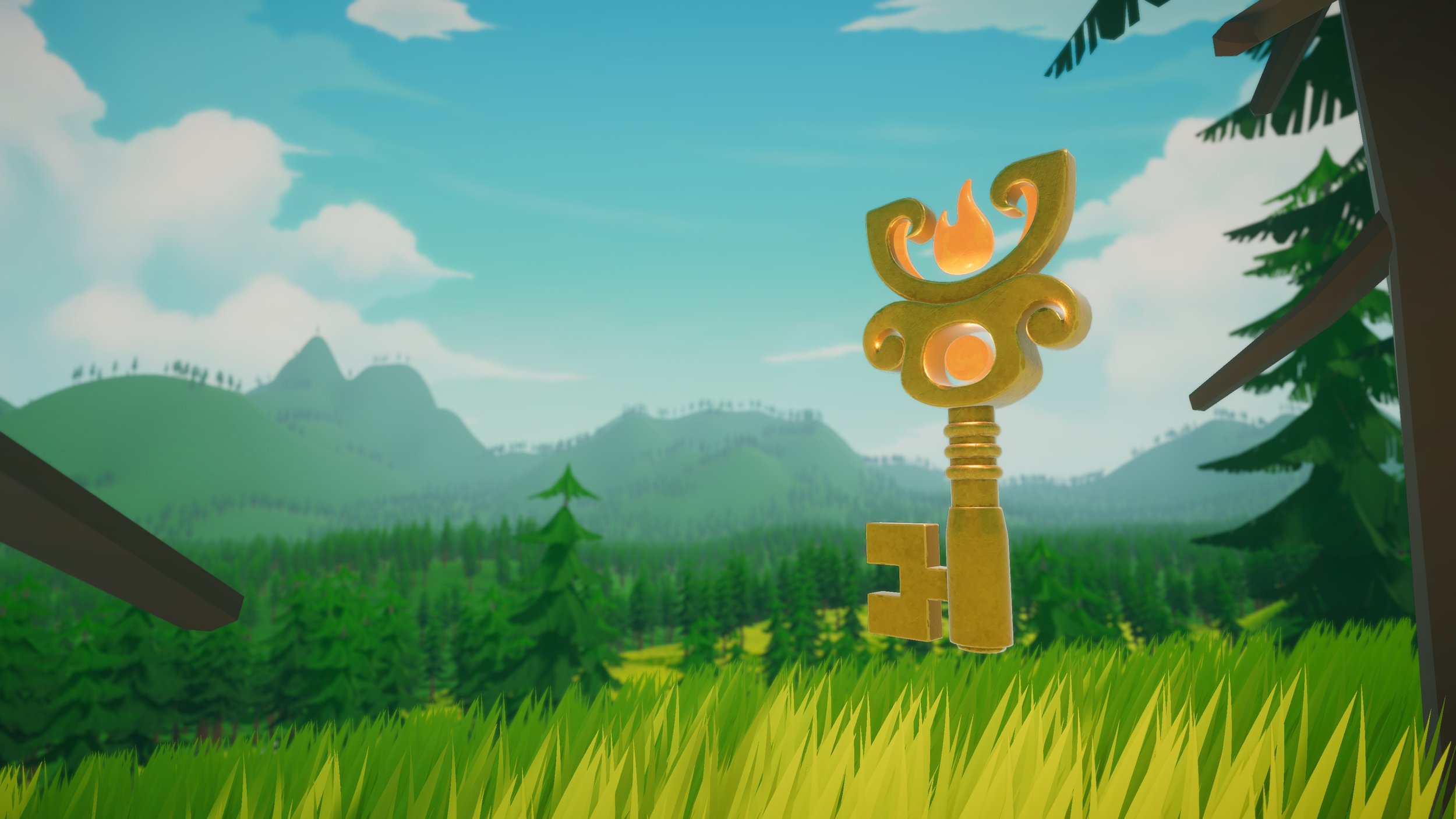GAME READY ASSET SHOWCASE
— THE GOLDEN KEY
A full production pipeline project: from modeling in Blender and texturing with PBR in Substance Painter, to real-time integration in Unity.
I’ve created a variety of game ready assets for clients all around the world, here I feature the magical Golden Key as a simple example of the game ready asset pipeline. The Golden Key was designed as a stylised, high-fantasy prop suitable for action-adventure or puzzle games. This was originally a prop created for Project Hunter as a rare item.

MODELING & UV UNWRAPPING
The base mesh was created in Blender. I prioritised clean, efficient geometry to ensure the asset remains suitable for real-time applications. While the model could be further optimised for in-game use, this version was specifically designed for close-up cinematic shots, which justified the inclusion of some additional geometry to enhance visual fidelity.
The model was manually unwrapped to maintain control over seam placement and ensure clean, distortion-free UV islands. To streamline the packing process and maximise UV space efficiency, I utilised UVPackmaster, which significantly speeds up the workflow while delivering optimal packing results.
PBR TEXTURING
Textures were authored using a PBR (Physically Based Rendering) workflow in Substance Painter, ensuring realistic material responses under various lighting conditions. Even though the visual style leans toward stylised, using PBR allows the asset to maintain compatibility and consistency across modern game engines.
For the baking process I utilised a high poly version of the key, and manually sculpted minor indentations, imperfections and scratches. Additional imperfections were also added via Substance Painter.
You can view the Substance Painter Preview and corresponding texture maps below.
KEY WITH MINOR SCULPTED DETAILS
SUBSTAINCE PAINTER RENDER PREVIEW
I created a stylised environment within Unity to showcase the model in context.
CREATING THE SHOWCASE
To showcase the key in context, I created a simple stylised environment in Unity. The Key model with it’s texture maps applied was then exported from Blender as a glTF file and imported into Unity.
GL Transmission Format (glTF) is an open-source and royalty free file type designed for efficient transmission and loading of 3D models in real-time applications.
It’s very well optimised, supports PBR materials, static models, animations, full scene data, and has amazing cross-platform compatibility.
To bring the scene to life, I added a simple C# script that applies a floating and rotating animation to the key—commonly used in games to signal interactive or collectible objects. This subtle motion helps draw the player's attention and reinforces the asset’s gameplay purpose.
The script is included below for reference:
using UnityEngine;
public class FloatAndRotate : MonoBehaviour
{
public float floatStrength = 0.1f;
public float rotationSpeed = 50f;
private Vector3 startPos;
void Start()
{
startPos = transform.position;
}
void Update()
{
// Float up and down
transform.position = startPos + Vector3.up * Mathf.Sin(Time.time) * floatStrength;
// Slowly rotate
transform.Rotate(Vector3.up, rotationSpeed * Time.deltaTime);
}
}







